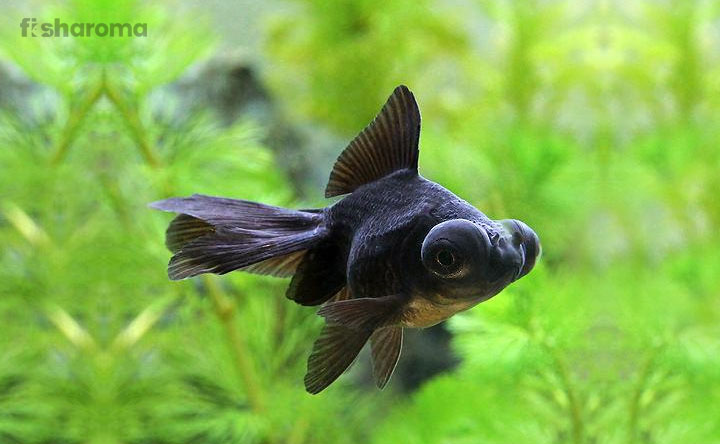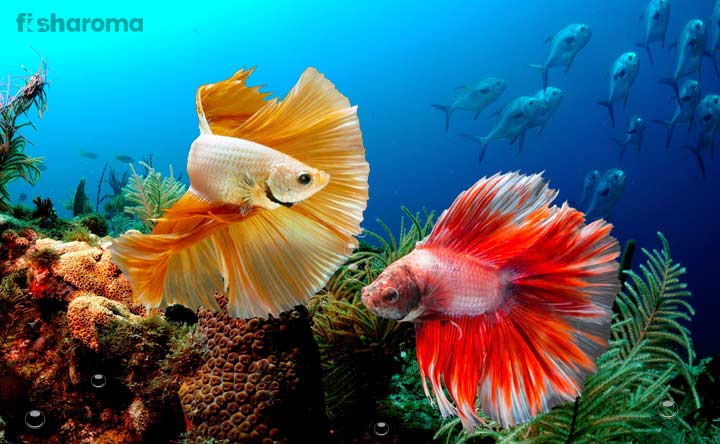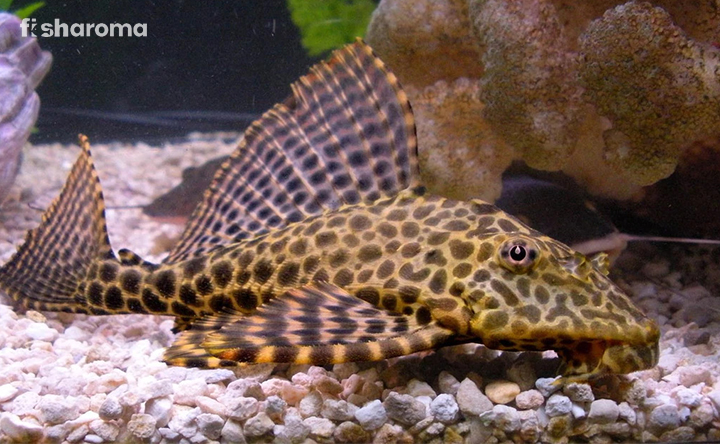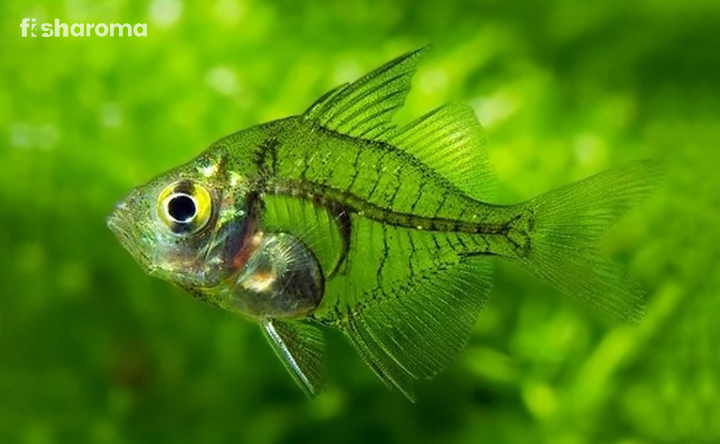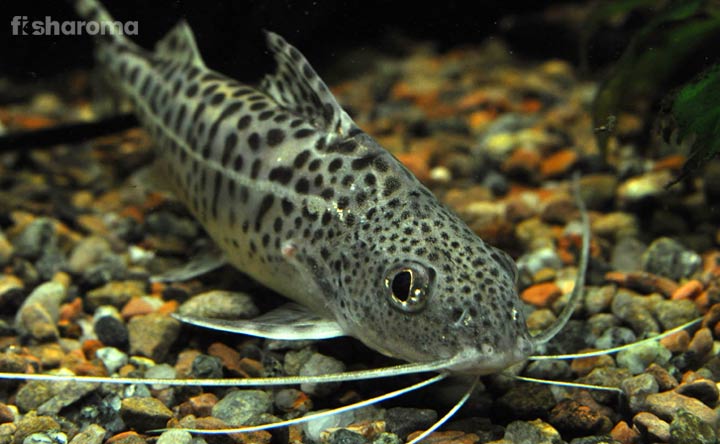Bristlenose Pleco – Complete Care Guide of this Peaceful Fish

- Bristlenose Pleco’s Origin
- Appearance of Bristlenose Pleco
- Tank Requirements for Bristlenose Pleco Bristlenose Pleco
- Water Type for Bristlenose Pleco
- Bristlenose Pleco’s Temperament
- Preferred Tankmates for Bristlenose Pleco
- Diet Plan for Bristlenose Pleco
- Bristlenose Pleco’s Breeding
- Diseases of Bristlenose Pleco with Prevention
- Types of Plecos
Are you planning to keep a peaceful, friendly, and vegan fish in Your Aquarium? If yes, then why don’t you select Bristlenose Pleco as your fish family member? As compared to other fish, this South American freshwater species is really adorable and lovable by aquarists because of its calm and tank-cleaning nature. Moreover, people prefer choosing Plecos for their fish tanks because of their easy-care level and small size. Now, you just need to know about the care guidelines for managing health, diet, breeding, nourishment, etc. about Bristlenose Pleco.
Quick Details about Bristlenose Pleco
A few quick and short information about Bristle Pleco will help you get useful knowledge before you choose this fish for proper breeding.
| Scientific Name | Ancistrus Cirrhosus |
| Origin | South America |
| Life-Span | 5-20 Years |
| Color | Black, Albino, Brown, Grey, Yellow, White, Olive |
| Temperament | Peaceful |
| Size | 3″ (7.2 cm) |
| Diet | Herbivore |
| Family | Loricariidae |
| Compatibility | Familiar |
| Tank Size | 25-30 Gallons |
| Care Level | Easy |
Overview
There are different categories in Plecos family but Bristle Pleco is the smallest in the group, so fish enthusiasts love keeping this species in their fish tank. This vivid-colored fish is also familiar with other names such as Bristlenose Catfish, Brushmouth Pleco, and Bushynose Catfish. You will get this breed in the market at $3-$4 price range which is easily affordable.
Bristlenose Pleco breed is a master of disguise because it knows the tricks to hide behind the rock and caves in the water and capable to take a form like a stone to escape from enemies. Moreover, this fish doesn’t like bloodshed and only consumes vegetation and herbs. So, you always need to know properly about the characteristics of this peace-loving species while selecting it as your aquarium-companion.
Bristlenose Pleco’s Origin
Originated in South America, these fish are found in the fast-flowing wild freshwater stream of the Amazon River Basin, and they are also found in the Panama region of Central America. The scientific name of Bristle Pleco, Ancistrus Cirrhosus was first coined by the Greek scientists and sailors. Later, it also got popular with a new name, Bristle Catfish.
Appearance of Bristlenose Pleco
This fish is famous as the smallest catfish in an aquarium that is about 3-5 inches long with a wide head and fat breadth. The flattened body of this species is covered with bony plates and the sprout tentacles are like the branches from the top-most part of their head. The tentacles of the male are quite prominent and longer than females. Therefore, you can easily identify the difference between male and female Bristlenose Pleco.
The bristles of the male fish are on the head and the bristles of female fish are on the nose. Also, they have a pair of abdominal and pectoral fins. Most of this species have darker backs and light-shaded abdomen, and this fish has spikes on the fins. If we talk about the mouth then it’s really cute with the round jawline and elongated lips that help them in sucking the juice of aquatic plants, herbs, and stones.
Usually, this breed has vivid colors like brown, black, olive, grey with yellow and white spots on its body. The underneath side of Bristlenose Pleco is light-shaded than the main body. The male bottom-dwelling fish is quite larger than the female ones.
The Bristlenose Pleco is blessed with bony armor that helps the fish fight with enemies like aggressive and semi-aggressive water species. The brave nature of this breed never allows it to get scared with the life-threatening attacks from different enemies.
Tank Requirements for Bristlenose Pleco
Like human beings, other aquatic species also have a specification and particular preferences for habituations. Thus, your cute little pet fish, Bristle Pleco also has a specific requirement regarding its living place. So, if you really want to keep your swimmer-buddy lively and stress-free then try to provide the natural environment and green ambiance to this herbivorous fish.
Tank Size
Bristlenose Pleco is a very hardy and easily adjustable fish, but it excretes more than other breeds; so, you need a minimum 30 gallons tank space to keep Bristlenose Pleco.
Ornaments
As a habitat in the Amazon River Basin, it enjoys greenery inside the stream. So, while setting a tank for your cute buddy, try to plant more live floating plants to provide your tiny water-dweller with an eco-friendly environment.
It is a bottom-dweller and it prefers living at the bottom part of the river and sucking the juice of the water plants and substrate of the rocks. So, keep fine gravels or small stone chips in the bottom bed of the aquarium under-water.
Lighting
Any special light is not needed in the tank of Bristlenose Pleco. Just simply provide a natural light which helps in keeping the plants of the tank healthy. Experts recommend installing a LED light on the ceiling of the tank which will last longer.
Filter
Originated from fast-flowing rivers, Bristlenose Pleco needs a strong filtration system which can also produce current in the water. This freshwater fish has a tendency to eat a lot of food and excrete must waste in the water. So, if the water is not well filtered then it will harm your pet fish breeds. For these types of fish, Canister and Hang-on-Back (HOB) filters of 300 mph are the suitable filtration system.
Moreover, you can install water pumps and air stones to create a large amount of water flow throughout the tank to refine the water.
Water Type for Bristlenose Pleco
Always keep fresh and well-aerated water in the tank that is oxygenated with moderate water flow. Moreover, follow the temperature, hardness and pH level of the water to make a comfortable home for your pet Bristlenose Pleco.
Temperature
The water temperature should be 27°F (-2 °C).
Hardness
The hardness of the water should be 20-25.
pH Level
The pH level should be 6.5-7.5.
Cleaning Method
You need to give extra effort in cleaning the tank of Bristlenose Pleco because its poops are sticky and you will find them sticking to the wall of the aquarium. So, use a soft brush and chemical-free liquid soap to wash and scrub out the dirt in the tank. Clean each corner, objects, and walls of the aquarium to maintain the hygiene. After washing the tank, wipe out the water droplets with a soft cloth.
Replacement Process
Change the water twice a month because Plecos eliminates many waste elements for their diet and hygiene can only be maintained if you keep clean water in the aquarium. You also need to change 10% of the water from the bi-weekly. However, while keeping freshwater, maintain the temperature, hardness and pH level of the water.
Bristlenose Pleco’s Temperament
Bristlenose Pleco is a peace-loving and calm-natured fish which can be the best friend of both the beginner fish-keepers and expert aquarists. This fish spends most of the time hiding during the days and sitting on the bottom rocks of the water. These species are neither dangerous in nature nor they like aggressive roommates for them.
Preferred Tankmates for Bristlenose Pleco
Bristlenose Plecos are social to other peaceful aquatic species that don’t harm other fish. However, the male Plecos are territorial sometimes when they see the same breed male with them in the tank. So, never keep them with the male companion of the same breed. Moreover, don’t keep Plecos with aggressive water species who can harm your peaceful friend as mentioned above. Try to choose other social and peaceful tankmates for Bristlenose Pleco such as:
- Guppy
- Zebra Danio
- Cory Catfish
- Hatchet Fish
- Mickey Mouse Platy
- Otocinclus, etc.
Diet Plan for Bristlenose Pleco
Bristlenose Pleco is a bottom-feeding fish and herbivorous, as mentioned at the beginning. Also, these fish are the best tank cleaners because they eat the algae in the tank. Moreover, they love consuming fresh leaves of plants and green algae. Thus, keep plants and driftwood inside the fish tank. You can also keep the following eatables in the diet of your calm-natured buddy:
- Sinking Algae Pallets
- Wafers
- Blanched Vegetables
- Boiled or Raw Lettuce Leaves
- Cabbage Leaves
- Cucumber
- Peas
- Carrots
Remember, fiber and carbohydrate should be included in the diet of Bristlenose Pleco. You can give non-veg food like blood worms occasionally in a month to your herb-loving friend. Also, there are other ready-made foods available in the market for Plecos such as:
- Hikari Tropical for Bottom Feeding Herbivorous Fish Food
- Tetra Veggie Complete Diet for Algae Eaters
- Xtreme Aquatic Cat Scrapers Fish Food
Feed them just twice a day because they are extreme poopers who makes the water dirty with their waste elimination, and do not overfeed them because that can be dangerous to their health. For more information, take suggestion from a veterinary physician or expert aquarist.
Bristlenose Pleco’s Breeding
The male Bristlenose Plecos are usually larger because they have whiskers and large bristles compared to the female fish. These water species are easy to breed and to encourage their mating, just keep some caves and hiding places in the water where they can mate. The male turns wild while mating and spawning, so extra space are needed during spawning. The females lay eggs during the rainy and winter season. Moreover, they also lay eggs on driftwood, caves, or on the piping.
The male and the female fish protect their eggs and spawning area from other fish until they get hatched and developed. The males clean the eggs and the nest after the birth, and aerates them with their fins for 4-10 days. It takes about 10 days for the fertilization and maturity of the eggs.
Try to cool down the temperature of the water like the stream of the Amazon Basin during the reproduction process of Plecos. Also, keep the eggs in another tank till they get mature, once they get developed, to keep them with their parents. The growth process of this peaceful fish is very fast around 6 months, and it becomes adult in 6-7 months.
Diseases of Bristlenose Pleco with Prevention
Diseases and ailments are parts of life for every living being, but the illnesses vary from species to species. If you are keeping a pet fish with you then acquire more information about the species. Try to learn more about the health issues and also know the prevention for the diseases. Have a look at a few common illnesses of Bristlenose Pleco:
- Ich
- Fish Fungus
- Fin Rot or Dropsy
To treat these diseases, talk to your veterinary physician, and add medicine in the aerated water of the fish tank. Always change the water three to four times a week when you are keeping Plecos, as they excrete more than other breeds. Take out the dead fish from the tank to avoid fungal and decaying infections. Moreover, feed your tiny friend two times in a day by following a proper diet. These preventions can really help you keep them fresh, healthy and happy with longevity.
Types of Plecos
There are 680 types of Plecos in the Bristlenose Pleco family that are peace-loving water species for aquarium. Among them let’s discuss eight common Plecos as follows:
- Candy Striped Pleco – People love to keep this breed in their fish tank because of its beautiful looks and peaceful nature. The vertical stripes all across the body of this fish make it more attractive. It is one of the best breeds for beginners because they are easy to care. This 4″ (10 cm) fish is smaller than other fish breeds.
- Snowball Pleco – This 6-7″ (15-14 cm), ball-printed fish looks colorful if kept in an aquarium. Snowball Pleco has fewer teeth than other Plecos and they are a good silent observer in a fish tank. Their large eyes and dorsal-caudal fin are frosted white.
- Butterfly Pleco – This Brazilian, Southeastern fish is chocolate-colored with symmetrical stripes in their body. It grows up to 4-5 inches and surprisingly it can camouflage with dark backgrounds. This invisible nature saves them from predators or enemies.
- Sailfin Pleco – This Pleco is also herbivore Catfish like Bristlenose Plecos that eat algae and plants. Occasionally, this fish eats small invertebrates or insects. The long dorsal fin has different looks from other fish, and it can grow up to 20″ (50 cm). You will find these breeds in Peru, Ecuador, Brazil, and Venezuela at the underground rocks and caves in the slow-moving river.
- Vampire Pleco – Vampire Plecos are also known as Tusken Plecos and Galaxy Plecos. They are famous for cave-dwelling and quick swimming because of high-level oxygen in their body. The dark gray and white spots on the black body of this fish make it attractive. Usually, these fish are 8-10 inches long and located in the streams of Venezuela and Brazil.
- Royal Pleco – Another name of Royal Pleco is Royal Catfish that have the capacity to eat and digest woods under the river or fish tank. It’s grayish brown in color with light horizontal striping and has red eyes. However, this fish is peaceful but poor swimmers and originated in the basins of Venezuela, Colombia, and Brazil.
- Blue-Eyed Pleco –Blue-eyed Plecos belongs to the catfish family and is identified with their spoon-shaped teeth. This breed grows about 10-14″ (25-27 cm) and has a black body with blue or turquoise eyes. Aquarists may find them in the river basins of South America and Columbia.
- Sunshine Pleco – These fish are also known as Golden Pleco because of their golden dots on the black body. You can find them in slow-moving water with a cool temperature.
Care Guide for Bristlenose Pleco
As a night-active fish, Bristlenose Pleco likes shadowy areas; so just fix a minimal dim light on the ceiling of the fish tank. The water temperature should be always kept medium cool, as Plecos prefer dwelling in a cool stream. Moreover, they are peaceful species, so avoid keeping any sound-vibrated water filtration pump in the aquarium where they live.
Always remember, if your Pleco is beginning to rush at the surface of the water, then you have to understand that oxygen level has reduced and the level of ammonia/nitrate is present in the water which is harmful to the aquatic species. Thus, store well-aerated and oxygenated water in the aquarium for a healthy respiration process of Plecos.
Following the proper care guide for Bristlenose Pleco may help them live happily, healthily and a long period of time. So, always try to look at the comfort needs of your tiny swimmer friend.
Fascinating Facts about Bristlenose Pleco
- They are natural aquarium-cleaners because they eat the decayed plants and algae in the fish tank.
- Bristlenose Plecos secrete slime or mucus from their skin that helps them become slim, active and move faster in water.
- They love eating both boiled and raw vegetables and other herbs.
- The male Bristlenose Pleco takes the responsibility of safeguarding their eggs and offspring after laying from the mother fish.
Know More about Other Peaceful Fish Perfect to Breed for Beginners
Beginners always prefer keeping peaceful fish and other non-violent water species in their aquarium because of the easy-care level. So, if you are a beginner and planning to breed calm-natured species then have a look at a few names:
- Pictus Catfish: Fish-keepers who have a hobby in breeding fish like to choose Pictus Catfish as a family member of the fish tank because they are peaceful and easy to care. Moreover, you will definitely like its colors, looks, and beauty that will appeal to you.
- Butterflyfish: This beautiful saltwater fish is non-aggressive in nature and easy to breed but its life span is up to one year only. It is also a tank cleaner like Bristlenose Pleco.


